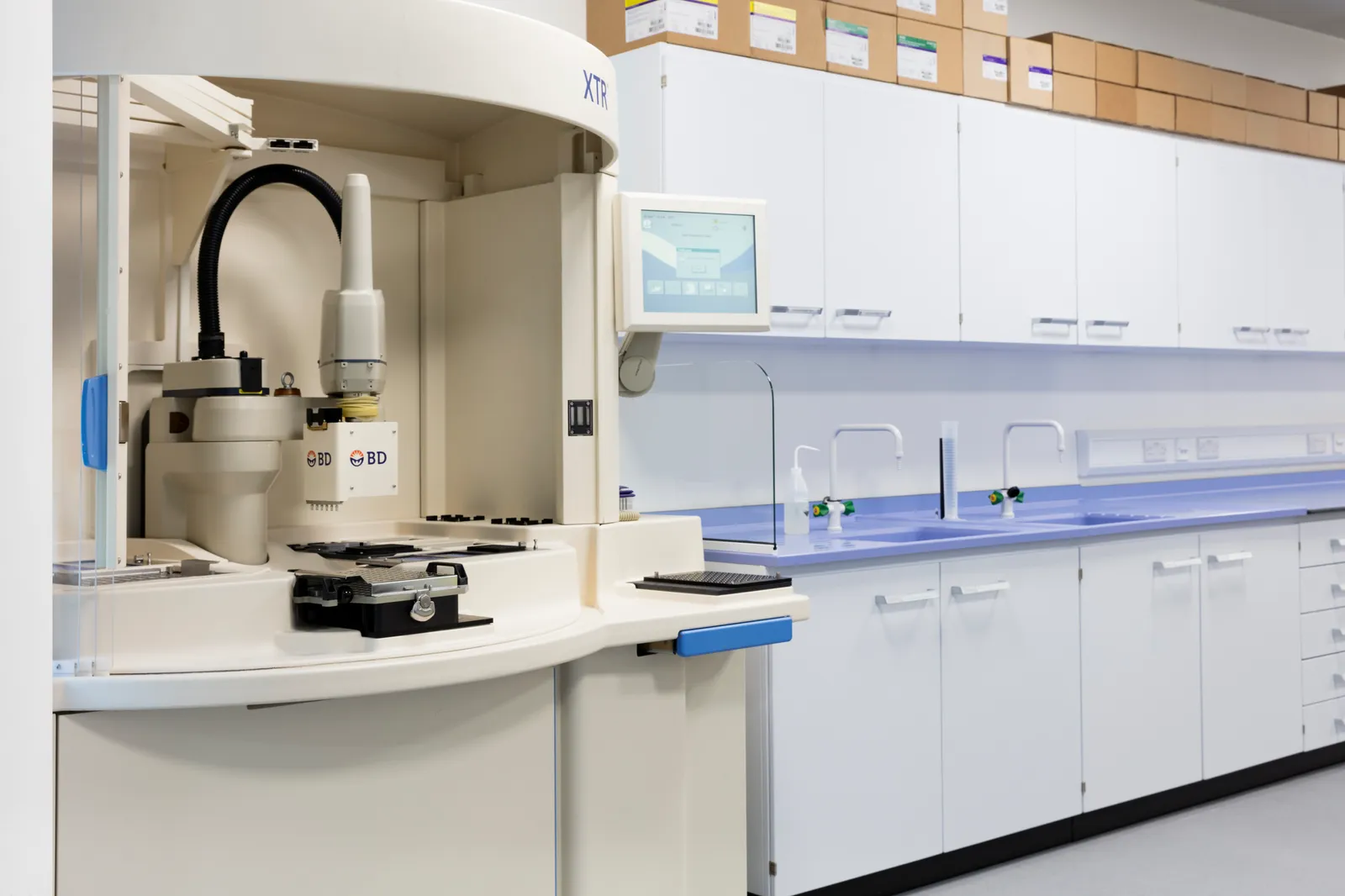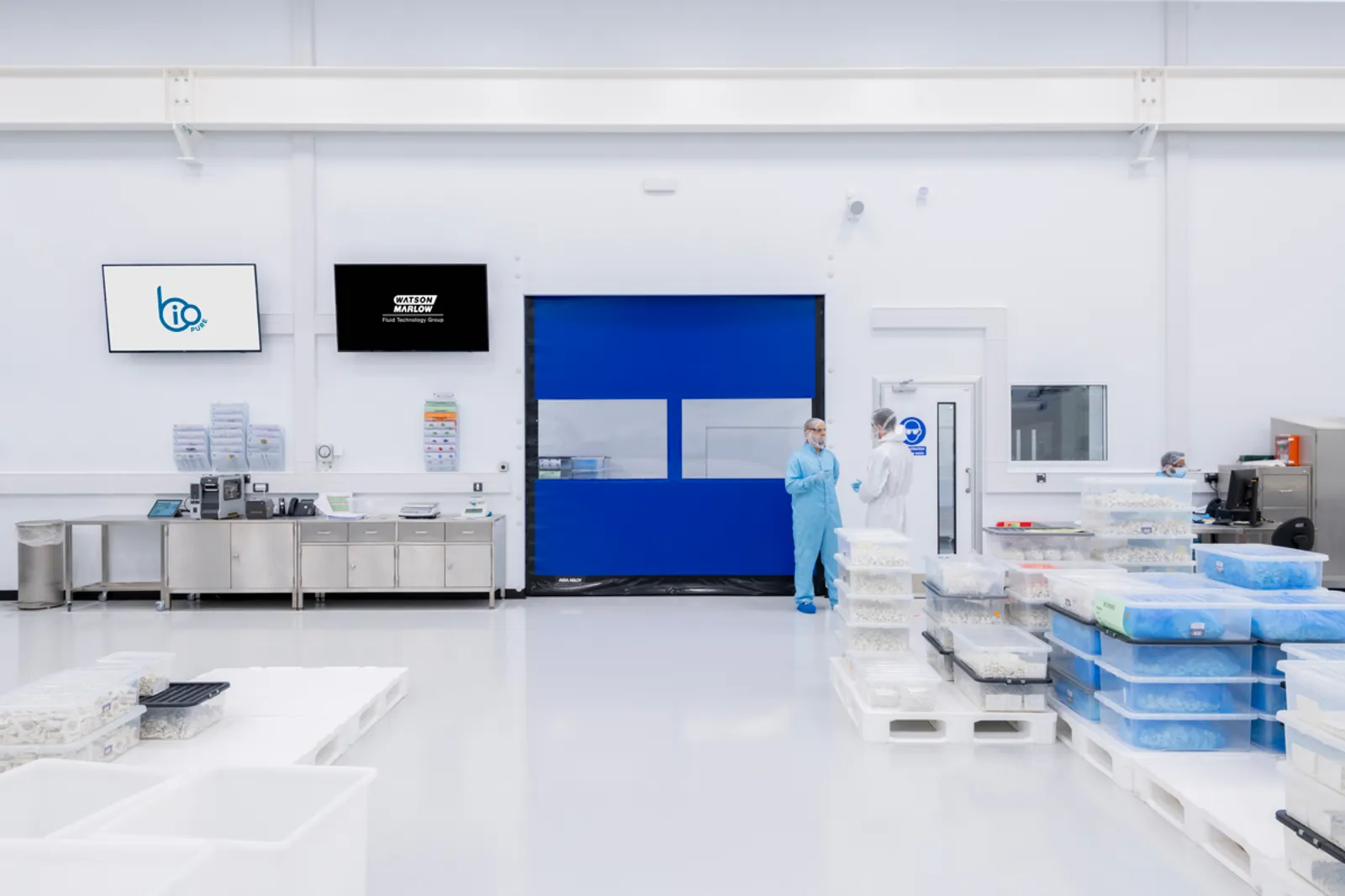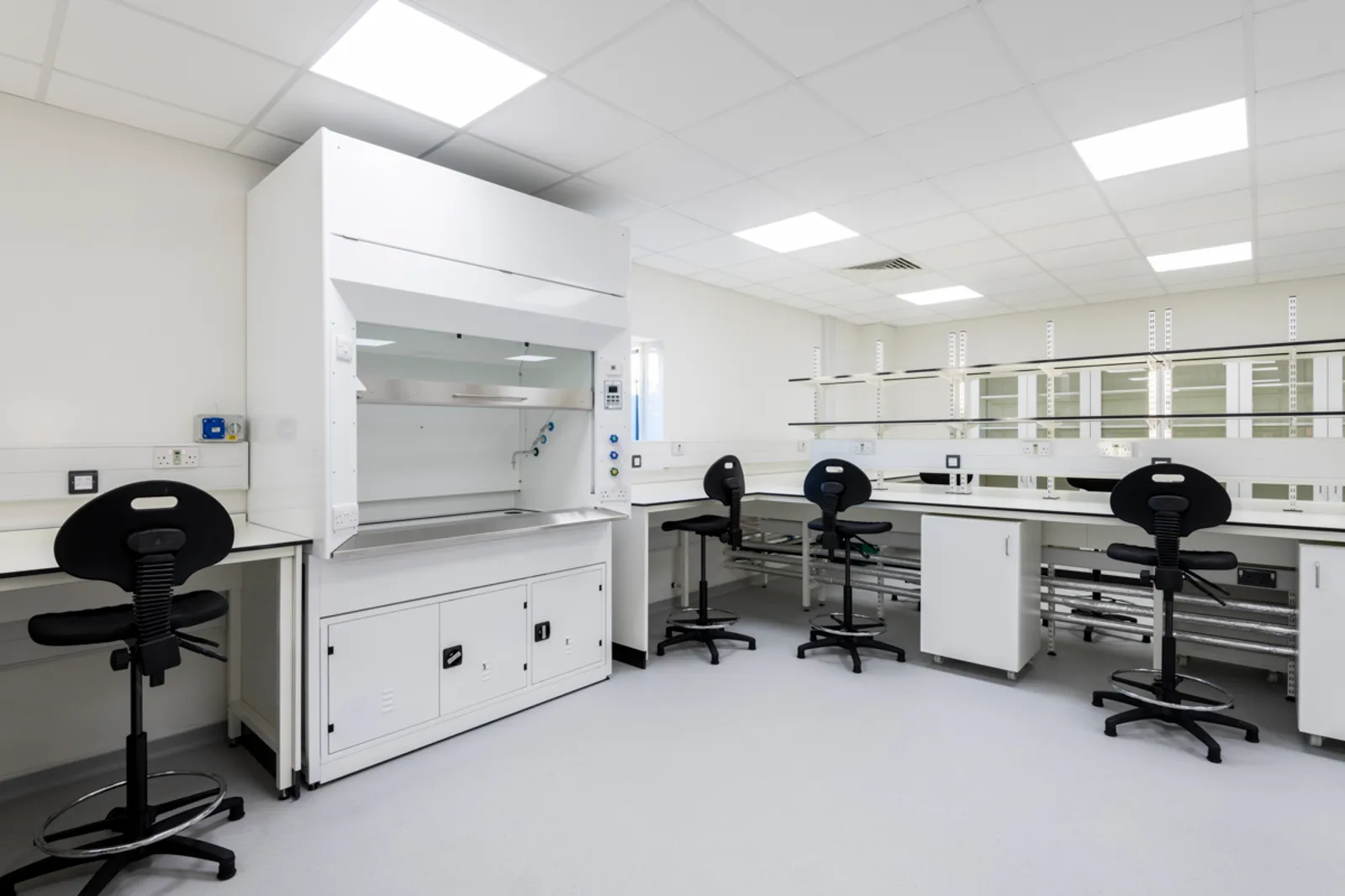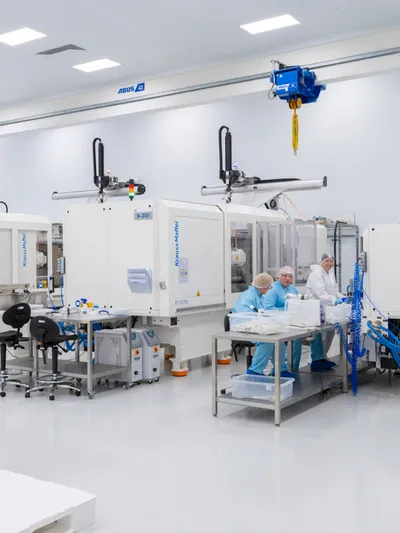Genomics laboratories are at the forefront of scientific discovery, enabling scientists and researchers to gain a deeper understanding of complex genomes. This enhanced understanding has led to significant advancements in medicine, agriculture, and biotechnology.
Geonomics labs are highly specialised facilities where meticulous design and cutting-edge technologies combine to accommodate sophisticated techniques, protect the integrity of experiments and ensure absolute compliance with regulatory standards.
In this blog, we will delve into the essential features of genomics labs, explore their unique components, and address common questions related to design considerations for genomics laboratories.
What is a Genomics Lab?
A genomics laboratory is a facility designed and equipped to enable researchers to analyse genomes (the total set of DNA within an organism). The labs support various types of research and applications, including whole-genome sequencing, transcriptomics, epigenomics, and metagenomics.
The work undertaken in such labs is complete and intricate. Processes such as nucleic acid extraction, library preparation, sequencing, and bioinformatics analysis require specialised equipment and highly controlled environments. Because of this, genomics labs must be meticulously designed, with every component and feature thoughtfully placed to facilitate effective, streamlined and successful working conditions.
Key Components of Genomics Labs
Sequencing Technologies
Next-generation sequencing (NGS) platforms are pivotal to the work conducted in genomics labs, as they enable high-throughput sequencing of DNA and RNA. NGS platforms require strict environmental controls as well as specialised infrastructure to operate effectively. As well as this, microarray technologies may also be fitted and customised to enable specific applications, such as gene expression profiling.
Bioinformatics Infrastructure
Sequencing technologies generate enormous amounts of data, and as a result, a robust bioinformatics infrastructure will also be required in a successfully functioning genomics lab.
This includes high-performance computing resources, advanced data storage solutions, and software that can handle complex data analysis and interpretation.
Excellent data management practices are essential for researchers to ensure the integrity of the gathered data and compliance with regulatory requirements.
Laboratory Workflow Optimisation
Efficient workflow design is essential for successful operation. Designers of genomics labs must consider the placement of equipment and how workplace areas will be strategically separated to ensure contamination risks are low and productivity is high.

Genomics Lab Design Considerations
Designing a genomics lab involves a multidisciplinary approach, integrating architectural, engineering, and scientific expertise to create a space that meets current needs and anticipates future developments.
Geonomics lab designers must consider the following:
Flexibility and Scalability
Given the rapid evolution of genomics technologies, these labs must not only be built for the present but also have the flexibility to adapt to future adjustments and needs.
Including design features such as modular furniture, adaptable utility systems, and scalable infrastructure will allow scope for smooth and effortless reconfiguration as research needs change.
Environmental Control
Maintaining precise environmental conditions is vital for experimental integrity. This includes temperature, humidity, and air quality control systems. Advanced HVAC systems with HEPA filtration are often employed to meet these requirements.
Safety and Compliance
Safety is a significant concern in genomics labs, and lab designers must ensure that their designs comply with regulations such as Good Laboratory Practice (GLP) and Occupational Safety and Health Administration (OSHA) standards.
Typical safety features that a genomics laboratory might be equipped with include emergency showers, eyewash stations, and proper signage, which are standard.
Data Security and Privacy
Given the sensitive nature of genomic data, labs must implement stringent data security measures. This includes secure data storage solutions, access controls, and compliance with data protection regulations.

Common Questions About Genomics Labs
What distinguishes a genomics lab from other laboratories?
Genomics labs specifically focus on the analysis of genetic material, and as a result, require highly specialised equipment to ensure research is protected, results are not skewed, and personnel working in the lab are protected.
How do biosafety levels affect the design of a genomics lab?
Biosafety levels (BSL) dictate specific design criteria to ensure appropriate containment and safety measures. Higher levels require more stringent controls, such as specialised ventilation, airlocks, and personal protective equipment protocols.
Why is flexibility necessary in a genomics lab design?
The dynamic nature of genomics research necessitates spaces that can adapt to new technologies, methodologies, and research focuses. Flexible design allows for cost-effective modifications without significant downtime.
Design your Gemonics Lab with Area Laboratories
Genomics laboratories are intricate spaces that demand careful planning to support pioneering research, ensure regulatory compliance, and adapt to future developments.
At Area Laboratories, we specialise in creating tailored lab environments that meet the distinct needs of genomic science, whether you're building from the ground up or upgrading an existing facility.
Our expert team works closely with research leaders, architects, and technical stakeholders to deliver fully compliant, future-ready laboratories. From early-stage design consultation through to full lab design and project completion, we provide the insight and support you need to bring your vision to life.
Ready to shape the future of genomic research?
Get in touch with Area Laboratories to discuss your project or arrange a discovery session today.




